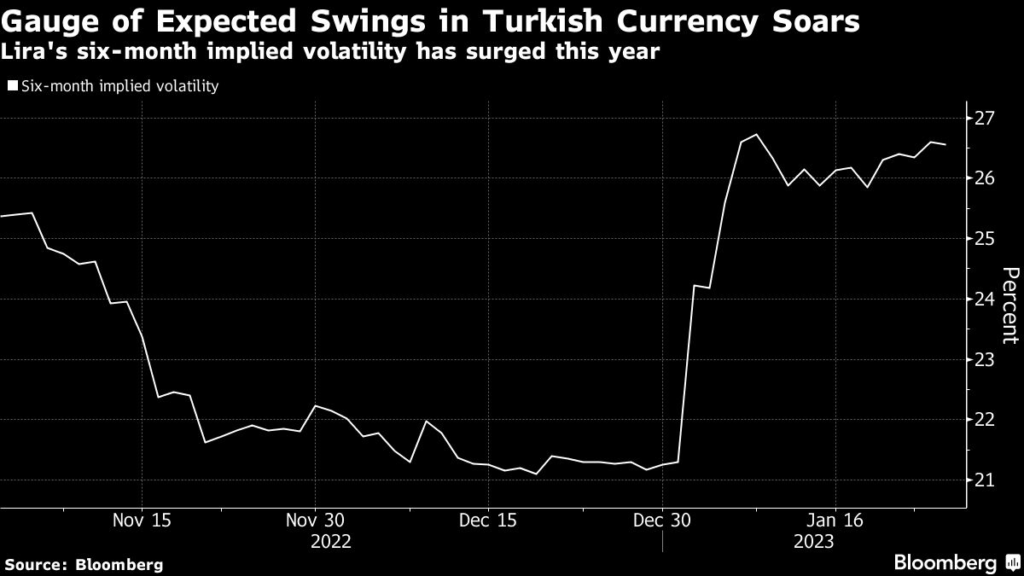Turkey’s central bank is considering a measure to deter lenders from selling currency derivatives to their customers, the latest effort to curb growing corporate demand for dollars.
(Bloomberg) —
Turkey’s central bank is considering a measure to deter lenders from selling currency derivatives to their customers, the latest effort to curb growing corporate demand for dollars.
The monetary authority is designing a new regulation to require banks to hold collateral for forward contracts, with the goal of ultimately cooling off demand for hard currency in the spot market, according to people familiar with the discussions. It’s still working to hammer out the measure and hasn’t finalized the details, the people said, asking not to be identified because the plans aren’t yet public.
For authorities, keeping the lira stable is the cornerstone of an effort to steady inflation that hovered over 85% late last year. The Turkish currency is down less than 1% against the dollar so far this year after losing close to 30% of its value in 2022 in the worst performance in emerging markets after Argentina’s peso.
The possible introduction of collateral requirements would discourage lenders from offering forwards to their customers and thereby push those looking to hedge positions toward the regulated futures market — known as VIOP — where their options are more limited, the people said. Forward contracts are agreements to buy or sell an asset at a specific price on a future date.
The central bank declined to comment.
Authorities believe the measure will curb demand for dollars on the open market. When a lender sells a forward contract to its customers, it buys the same amount of hard currency to hedge its own exposure — something that’s not necessary for VIOP transactions.
Companies have grown reliant on bespoke contracts with banks that provide hedging tools more tailored to their needs to protect against risks to the lira, which is trading near record lows.
The lira, one of the few currencies still offering negative real yields, has traded within a narrow range since September thanks to a carefully managed strategy that includes interventions.
Policymakers have used a tangle of regulations — ranging from tweaks in reserve requirements to securities maintenance — to control the cost of money in the economy and channel credit to priority industries like manufacturing.
Demand for protection against swings in the Turkish currency has risen as the market is turning more jittery, with the lira’s six-month implied volatility rising by the most among emerging-market peers in January. Currency investors are also paying the highest premium in four months to hedge against further losses in the lira.
The job of steering the lira will become more challenging after the central bank started to lay the ground for deeper monetary easing last week.
Policymakers already cut interest rates by 500 basis points and into single digits between August and November last year, fanning inflation and leaving the lira more vulnerable by depriving it of a buffer against market selloffs.
–With assistance from Tugce Ozsoy and Netty Ismail.
More stories like this are available on bloomberg.com
©2023 Bloomberg L.P.










